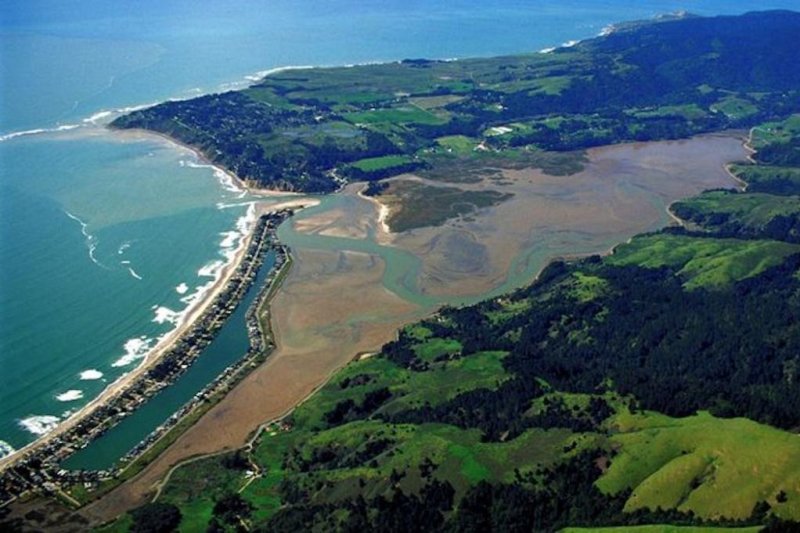Researchers surveyed 14 Pacific coast wetlands, including the Bolinas Lagoon in Marin County, California. Photo by U.S. Army Corps of Engineers/Wikimedia Commons
Feb. 22 (UPI) -- Species that rely on the Pacific wetlands for food and shelter could soon be out of luck. According to a new study, sea level rise could swallow up salt marshes along the U.S. Pacific coast by the end of the century.
"The bottom line is, especially in California, most of the salt marsh is going to go away by 2100," Richard Ambrose, a professor of environmental health at University of California, Los Angeles, said in a news release. "Some will go away by 2050."
Ambrose and his colleagues surveyed 14 salt marshes along the Pacific coast, accounting for the physical characteristics of each. The scientists designed models to predict how each marsh would be affected by different sea level rise scenarios.
Under a scenario with limited sea level rise, the impacts would be minimal. Moderate and severe amounts of sea level rise are more likely, however. Under a severe scenario, the marshes would be almost completely wiped out.
But even the predictions under extreme scenarios could be conservative. A recent study found global sea level rise is likely to continue for as many as 300 years after carbon emissions and atmospheric warming peak.
The best scientists can do is offer a range of possibilities and identify the steps communities and governments can take to both prevent and prepare for the worst scenarios.
The new research -- published this week in the journal Science Advances -- suggests even moderate scenarios could have serious consequences for the communities of plants and animals, including vulnerable fish and birds species, who live in or visit Pacific wetlands.
"We could see an ecological cascading effect," said Glen MacDonald, a professor of geography at UCLA. "If you erase an entire system, the effects are going to ripple upward to predators and downward to prey species. It is just startling."
In other parts of the country, salt marshes can move inland as sea levels rise. But along the Pacific coast, steep rises in elevation and the presence of dense urban development makes the process of wetlands transgression impossible in most places.
In addition to providing shelter and sustenance to birds, mammals and fish, salt marshes also help protect humans from flooding and provide filtration services that keep toxins from moving into inland freshwater systems.
Scientists suggest more must be done to protect the wetlands that remain. UCLA researchers are currently experimenting with sediment deposition to raises the land and protect of salt marshes.















